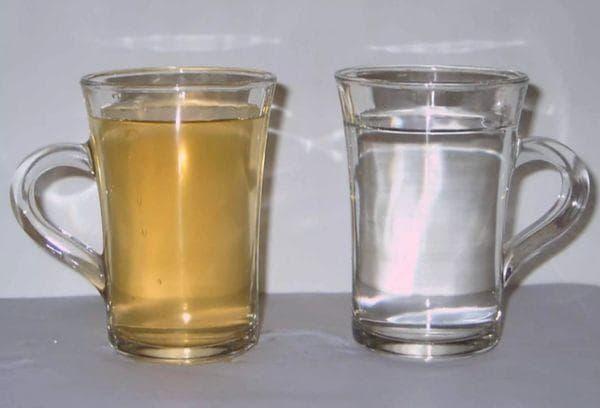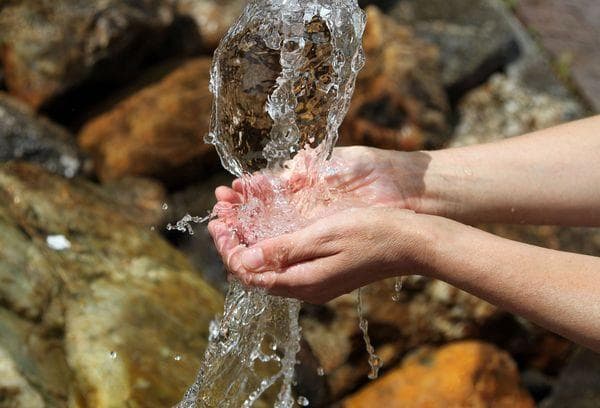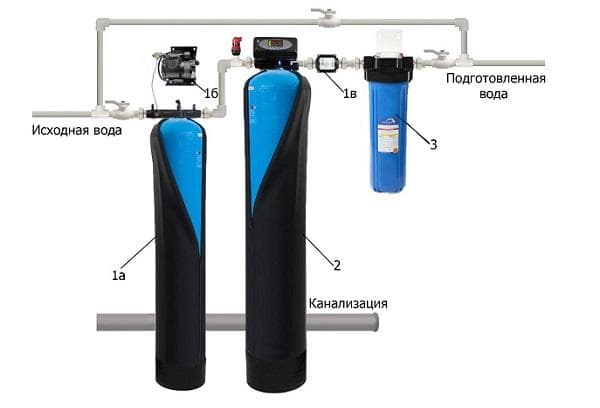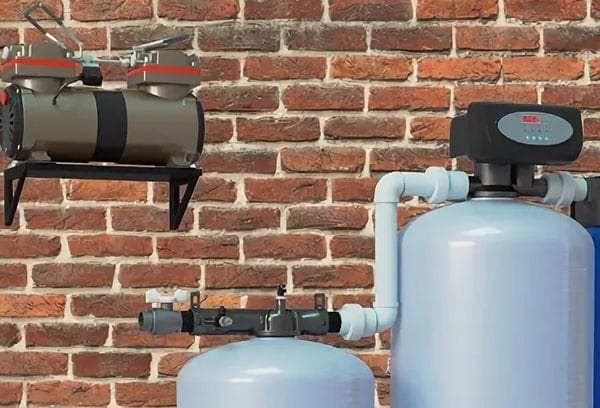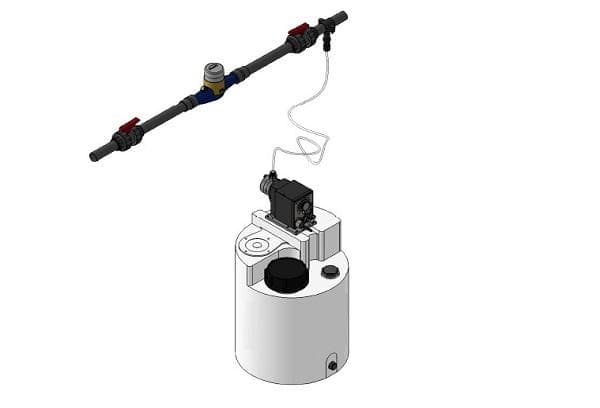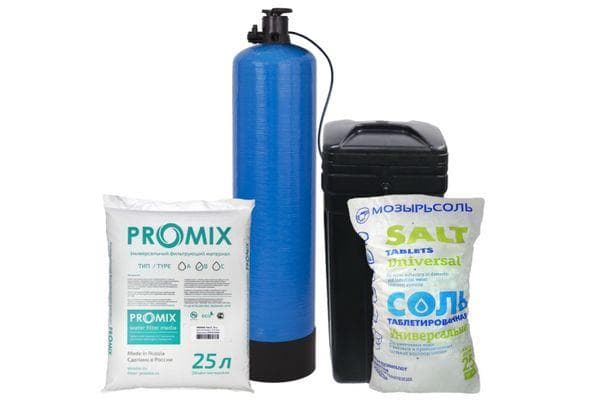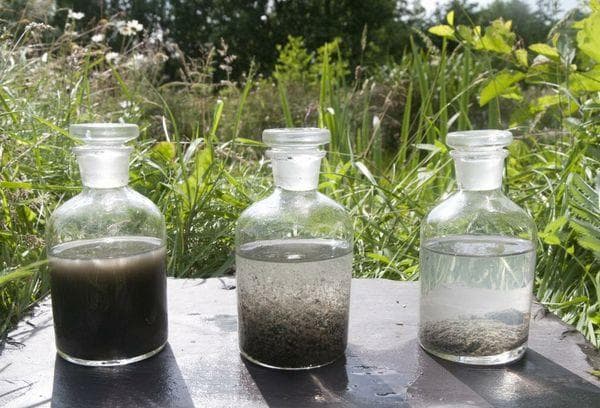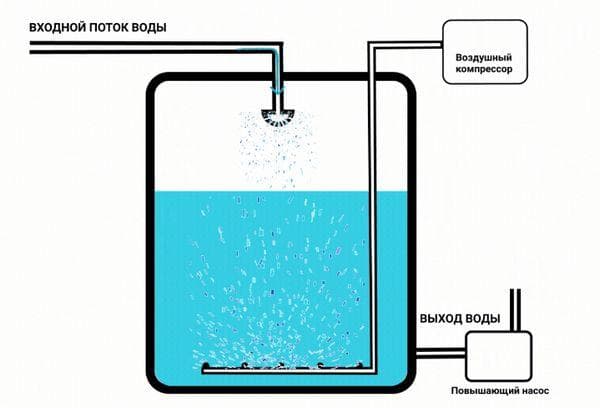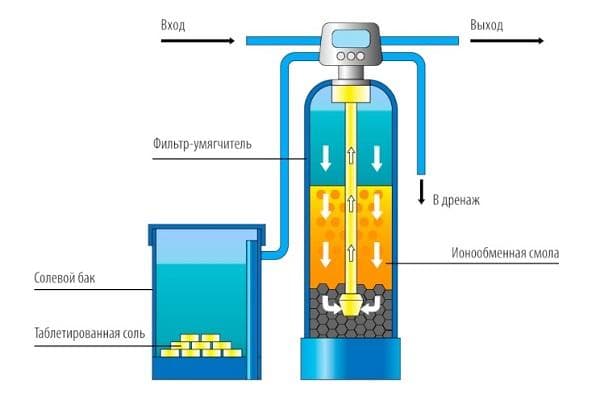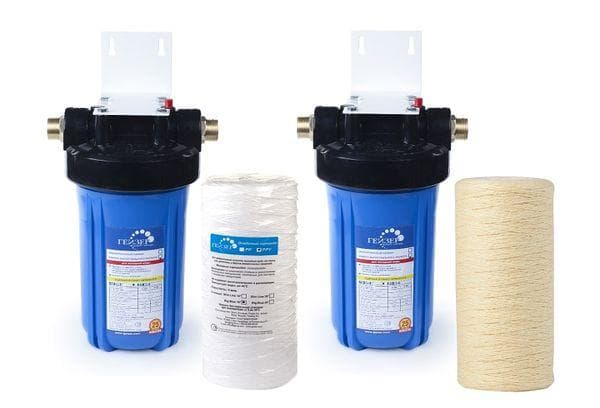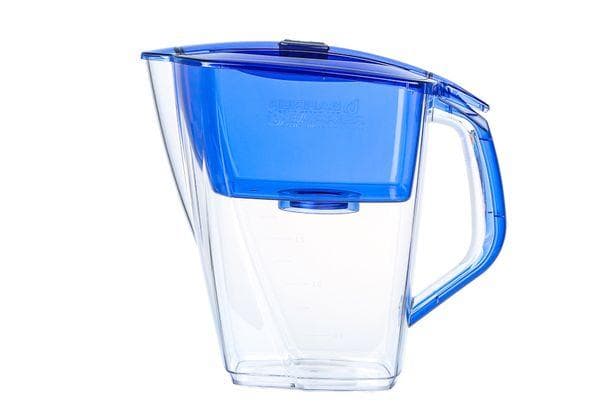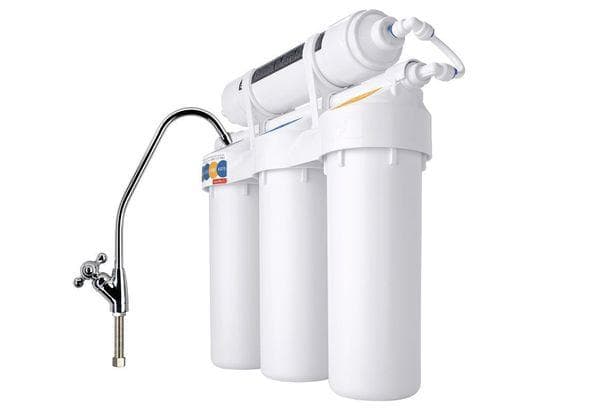What to do if there is a lot of iron in the water - professional and traditional cleaning methods
Content:
A well or borehole in a private house is an invariable plus for the entire subsidiary farm, but what to do if what flows from the tap is not life-giving moisture, but a slurry with an unpleasant color and odor. Purifying water from iron and manganese is one of the most common problems faced by residents of the private sector and owners of dachas where there is an independent source. In order not to spoil your health, there are many ways to remove heavy metal from liquid and not put your family at risk.

When to drink is harmful!
In the well of a private house, iron is usually present in colloidal form, which manifests itself in a characteristic color and odor, and the abundance of this element in water is a natural process. This metal in normal concentration is beneficial for the body, but when it is in excess, sooner or later it will affect deterioration of health.
Why is high iron content in the body dangerous?
- the likelihood of cancer increases;
- stones form in the liver and kidneys;
- the functioning of the cardiovascular system is disrupted;
- fatigue and weakness increase.
Such water is especially dangerous for the child’s body, which is most susceptible to the absorption of unnecessary elements.
Level of iron in drinking water
In main water supply systems, the level of iron in drinking water is clearly regulated by SanPin 0.3 mg/liter. No one can say how much is present in a well at a dacha or in a private household without special tests. You can, of course, do an examination, but you can identify the first signs of a health hazard yourself.
What does water with high iron content look like?
There are enough obvious signs to immediately understand that the liquid from the tap poses a threat to health. First, if the well does not flow clear, but yellowish liquid. The second is a brown sediment on the pots and kettle. If there is an abundance of metal at the moment of boiling, you can see brown foam.
What determines the increased iron content in water:
- obvious metallic taste;
- a yellowish tint that precipitates during settling and boiling;
- the liquid leaves smudges on the surface of the plumbing fixtures;
- unpleasant smell.
At the first signs of an increase in iron, it is undesirable to drink such water and cook food with it; you need to immediately take cleaning measures. Modern manufacturers provide many options for removing heavy metal, so you just need to choose the right one based on volumes and liquid needs.
Removing iron from well water
The cleaning process is quite simple. The principle of operation of any system is that the active substance reacts with a metal dissolved in water and removes it into sediment. It is worth noting that all reagents used in this cleaning method are safe and do not pose a threat to human health.
Iron removal system with catalytic and autocatalytic loadings
Allows you to purify water with a metal content of up to 3 mg/liter. The process of getting rid of iron and manganese involves the interaction of a reagent, often made from other metals and oxygen dissolved in water. Through a simple chemical reaction, the heavy components of the liquid precipitate and are retained by filters, which simply need to be washed periodically with running water. The cost of such a filter is 20-25 thousand rubles.
Iron removal system based on ion exchange resins
Suitable for purifying drinking water with iron content up to 5 mg/liter. It purifies the liquid based on a chemical reaction, but the catalyst is not other metals and oxygen, but a special resin that reacts with metals at the ionic level. This purification method is considered the most convenient for consumers with small amounts of heavy metals in water. The cost of the system is 25-30 thousand rubles.
Compressor deferrization system
Used when iron concentration reaches 10 mg/liter. The system consists of two modules, one of which pumps air, the second has catalytic loads. Under the influence of oxygen and the reagent, iron precipitates and accumulates in the filter. This system is effective not only in ridding water of iron, but it also removes hydrogen sulfide and manganese. The price of comprehensive cleaning reaches 50-70 thousand rubles.
Iron removal system based on sodium hypochlorite dosage
Designed for purification if there is a lot of iron in the water with a concentration of up to 15 mg/liter. Sodium hypochlorite is considered a powerful reagent that reacts not only with metals, but also with hydrogen sulfide. The system consists of a whole complex: a tank with a solution, a pump and dosing and iron removal columns.
As a result, all harmful components in the liquid settle on the filters. The cost of the equipment varies between 50-60 thousand rubles, and you also need to take into account the cost of installation, because you cannot install it yourself.
Combined iron removal and softening systems
Water hardness in combination with a high content of iron and manganese is not only dangerous to human health, but also puts an additional burden on household appliances, which often fail with this combination.
Combined systems operate on a two-in-one principle, which includes a column with a reagent that reacts with metals and a column with an ion exchange resin, which softens the liquid to normal. The cost of the complex will depend on the reagents needed for cleaning.
Do-it-yourself water purification from iron in a private home and country house
If it is not possible to install expensive equipment, then you can try traditional methods. Purifying water with your own hands is, of course, less effective, but it will remove some of the impurities that spoil the taste and color of the liquid.
Ways to remove iron from water at home:
- Advocacy. The simplest method for home use is to pump water into containers and simply let it sit for 24-48 hours. Under the influence of oxygen, iron precipitates, but in this case you will have to constantly wash the tanks from an unpleasant slimy coating.
- Freezing. Suitable for drinking at the dacha. The bottle is filled with water and put into the freezer, when the liquid freezes by 2/3, the unfrozen part is drained, and the thawed ice can be safely drunk.
- Boiling. When the liquid is heated, it boils, which saturates it with oxygen, under the influence of which iron oxidizes and precipitates.
- Application of minerals. Silicon and shungite are used, which are placed at the bottom of the container and aged for 48 hours. The natural properties of minerals will not only help iron precipitate, but will also disinfect the water from pathogenic bacteria.
- Coal. You can make a simple filter yourself. To do this, just wrap the coal in several layers of thick fabric and pass liquid through it; the output will be clean and safe water that you can drink.
These methods have long been used in private homes and in the country, and they are effective. But this is if you consume water in small quantities, but with large consumption it is better to think about purchasing special means and equipment to remove harmful impurities from the liquid.
What professional methods exist for purifying water from iron?
The consequences of wastewater, natural processes in nature and environmental pollution force chemists and engineers to annually come up with and introduce into production new methods of purifying and improving the quality of liquids that are consumed by humans. Today, there are many ways to achieve results without major financial investments, which is what most residents of the private sector use.
Aeration
Essentially, this method saturates the water with oxygen, upon interaction with which iron and manganese precipitate. For wells and wells with a small content of harmful impurities, aeration will help to carry out additional treatment, but more often it is used in complex systems in conjunction with chemical reagents or ionic technology. This approach to water supply makes the liquid entering homes safer.
Purifying water from iron using reagents
The method involves quickly purifying water and creating a sediment of harmful elements by adding chemicals that act as oxidizing agents to the container. Typically, household systems use sodium hypochlorite and potassium permanganate. This cleaning method is very effective, but requires the consumer to know the level of iron in the water and regularly replenish the system with reagents.
Reagent-free water purification from iron
It is often used in combination with aeration, because it requires a liquid that is maximally saturated with oxygen. When cleaning, natural minerals or synthetic substances are used to replace them, which enhance the action of oxygen to quickly remove heavy metals from the liquid.As a result, iron settles in the filters, which just need to be washed periodically under running water and you can continue to use the system.
Ionic technology
Removes iron, magnesium and potassium from water at the molecular level. The liquid, passing through a special ionic resin, is purified, and all harmful elements are collected on the surface. The method is quite effective and safe for humans, but requires constant monitoring of the state of the metal catalyst. The resin must be regularly removed and washed to remove sediment.
Reverse osmosis systems
It is able to completely rid the liquid of harmful impurities and pathogens. The system works by passing water through a membrane with tiny pores at the molecular level and collecting all harmful elements on the surface. This purification is quite effective, but it makes the water so pure that it can be compared to distilled water, and this may not appeal to all consumers.
What filters are there to remove iron from water?
Before choosing a system and method for removing harmful impurities from a liquid, you need to determine several factors for yourself - the speed of the catalyst, productivity and type of filter element. If you need water only for drinking, then you do not need to purchase a whole complex; one jug per day is enough for a person.
If you need a large amount of liquid, which is used for cooking and other household needs, you should pay attention to filters that are installed in the water supply system.
Jug type systems
The easiest option for always having clean water to drink.Typically, the jug holds 1.5-2 liters of liquid, which, passing through a filter cartridge with carbon or other safe reagent, becomes suitable for consumption. Replacement elements of the system are sold in all stores, and they need to be changed 1-2 times a month.
Filters that are installed on the faucet
They retain relatively large iron particles due to the membrane, but are not able to purify the water completely. Such filters are convenient due to their mobility, which makes it possible to move and connect them to the tap where they are most needed. Requires replacement of the replacement element once a month.
Washer filters
They consist of an entire filtration system, which allows you to completely normalize the excess amount of iron in the water. Quite effective and taking up little space, they are usually installed under the kitchen sink and cut into the water supply.
The absorbent element can be made of sand, coal or natural mineral, and there are also membrane filters that trap not only metals, but also biological contaminants. Essentially, this is a mini liquid purification station, but with more compact dimensions than the system.
The choice of drinking water purification method depends on the degree of iron content and the system’s ability to supply the volume necessary for comfortable living in the house. The main thing is that at the slightest sign of a high metal content, take measures that will provide everyone living with life-giving moisture in a safe form.
